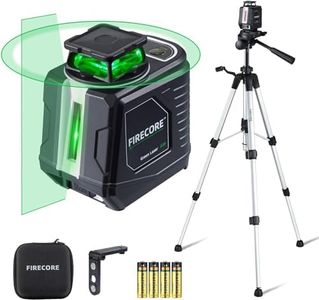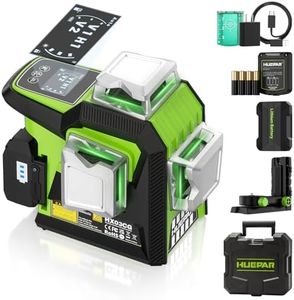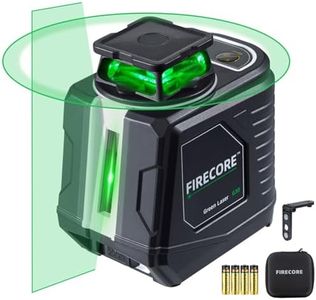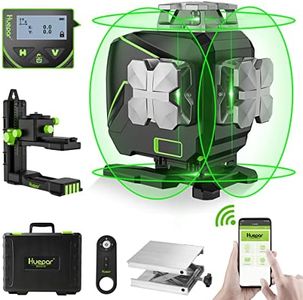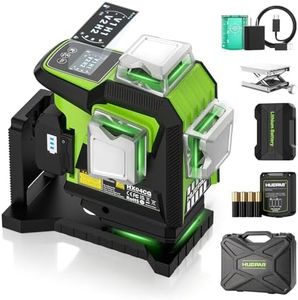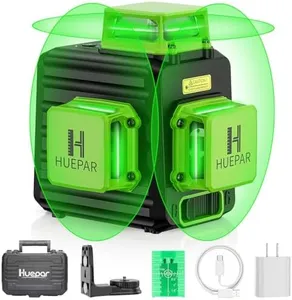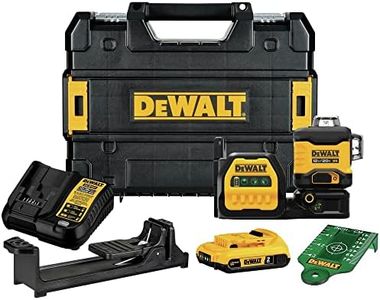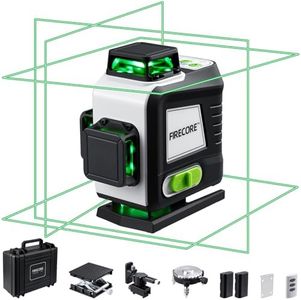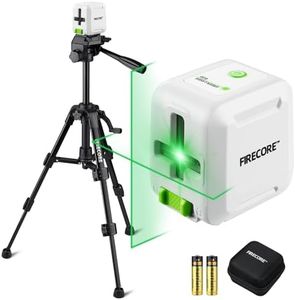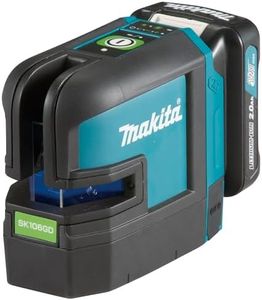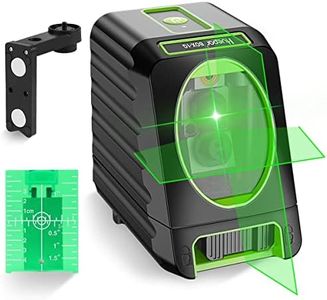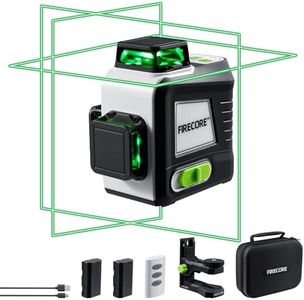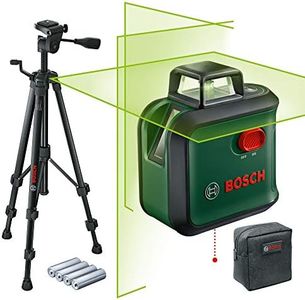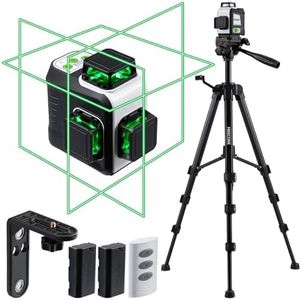We Use CookiesWe use cookies to enhance the security, performance,
functionality and for analytical and promotional activities. By continuing to browse this site you
are agreeing to our privacy policy
10 Best Green Laser Levels
From leading brands and best sellers available on the web.By clicking on a link to a third party's website, log data is shared with that third party.
Buying Guide for the Best Green Laser Levels
Choosing a green laser level can really help make your measurement and alignment tasks faster and easier, especially since the green beam is much more visible to the naked eye compared to red lasers. Before you buy, think about where and how you’re going to use it: indoor or outdoor, for hanging pictures, tiling, carpentry, or construction? Consider how much range and precision you need for your tasks, and look for features that will save you time or effort on the job. Understanding the key specifications will help you pick the right tool for your level of work—whether you’re a DIY enthusiast, a handyman, or a dedicated pro.Laser Visibility/ColorThis refers to the color and brightness of the laser beam. Green laser levels are much brighter and more visible than red ones, especially under bright light or outdoors. If you often work in bright or sunlit conditions, a green laser will be much easier to see. For mostly indoor, low-light applications, the advantage of green is less critical, but still useful for visibility.
RangeRange means how far the laser line remains visible and accurate. Basic green lasers work well over 10-15 meters indoors, mid-range models go up to 30 meters, and some professional types can reach 50 meters or more, sometimes with a detector. Select a range based on your needs: small rooms don’t require much, but large spaces or outdoor sites need extra range. The task—whether it's a simple room alignment or a big construction layout—will guide you here.
AccuracyAccuracy shows how close the level's line is to true level or plumb, usually measured in millimeters per meter. Everyday tasks usually need an accuracy of about ±0.3 mm/m to ±0.5 mm/m, while precision work may demand ±0.1 mm/m. If you’re hanging shelves or frames, basic accuracy often suffices. Jobs like tiling, fitting cabinets, or construction benefit from higher accuracy.
Self-Leveling FeatureSelf-leveling means the device can automatically adjust itself to project a perfectly horizontal or vertical line even if the surface it’s on is slightly uneven. Some levels are manual and require careful placement. If you want faster setup and fewer mistakes, especially on uneven surfaces, pick a self-leveling model. For permanent workshop use on stable surfaces, a manual version might be enough.
Number and Type of Laser LinesLaser levels can project one, two, or several lines—horizontal, vertical, or even a full cross. Some advanced models generate a full 360-degree line. For simply aligning pictures or tiles, a single line might do. If you need more, like for installing drop ceilings or laying out wall framing, cross-line or 360-degree models provide more flexibility.
Mounting OptionsThis refers to how you can attach or set up the laser level—such as with a tripod, ceiling mount, magnetic mount to metal, or direct placement on a surface. If you’ll be using it in various locations or need to project lines at different heights, having multiple mounting options gives you more versatility.
Durability (Build Quality and IP Rating)Durability describes how well the laser level handles rough use, dust, and water. The IP (Ingress Protection) rating tells you specifically how resistant the device is to dust and moisture—higher numbers mean better protection. Occasional home use may not need a rugged model, but for job sites or outdoor work, choose something sturdy with a good IP rating.
Power Source and Battery LifeLaser levels can be powered by standard batteries, rechargeable batteries, or even plug-in adapters. Longer battery life is important for longer projects or outdoor work without easy access to power. If you’re often on the go or working on large sites, prioritize longer runtime or easy battery swaps.
